
The Ultimate Guide to Bikepacking Gear for Multi-Day Trips
- 1. Why Bikepacking Gear is Essential for Multi-Day Trips
- 2. Essential Bikepacking Gear for Long-Distance Rides
- 3. Choosing the Right Bikepacking Tent
- 4. Must-Have Accessories for Bikepacking
- 5. Maintaining and Packing Your Bikepacking Gear
1. Why Bikepacking Gear is Essential for Multi-Day Trips
When embarking on a multi-day bikepacking adventure, having the right gear is crucial to your comfort, safety, and success on the trip. Unlike traditional cycling, bikepacking involves carrying all your essential gear with you, which makes careful consideration of your equipment even more important. The gear you select will not only influence your ride but also impact your ability to tackle difficult terrain, deal with varying weather conditions, and maintain your bike throughout the journey.
Maximizing Comfort and Efficiency
The right gear ensures that you can enjoy your ride without being bogged down by unnecessary weight or discomfort. Proper packing and equipment can make the difference between a fun, enjoyable ride and a grueling, exhausting ordeal. The right combination of gear will allow you to go further, faster, and more efficiently while minimizing your physical strain.
Safety on the Road
Bikepacking trips often take riders off the beaten path, and in these remote locations, safety is paramount. Whether it’s a high-quality tent for shelter, a robust first aid kit, or essential tools for bike maintenance, the gear you carry should be well-equipped to address any emergency or unexpected situation that might arise.
2. Essential Bikepacking Gear for Long-Distance Rides
Before setting off on your bikepacking adventure, it’s important to have the right equipment. Here’s a breakdown of the essential gear you’ll need for multi-day trips:
1. A Durable Bike
The foundation of your bikepacking setup is your bike. You’ll need a reliable, durable bike that’s capable of handling the varied terrain you’ll encounter. A touring bike, mountain bike, or gravel bike are all excellent choices, depending on your route. Look for a bike with strong frame mounts, plenty of gears for varying elevations, and tire clearance for wider tires that can handle gravel and dirt roads.
2. Bikepacking Bags
Unlike traditional cycling, bikepacking requires specialized bags to carry all your gear. The most common bikepacking bags include frame bags, handlebar bags, seat packs, and top tube bags. Each of these bags serves a different purpose, allowing you to organize and distribute your gear efficiently. The goal is to keep the weight evenly balanced for comfort and better bike handling.
3. Hydration System
Staying hydrated during your trip is vital. For longer rides, consider using a hydration pack or large water bottles that are easy to access while cycling. Some bikepacking bags come with hydration bladder compartments for added convenience.
4. Sleeping System
For multi-day trips, you’ll need a reliable sleeping system. This typically includes a lightweight tent, sleeping bag, and sleeping pad. Your sleeping system should be compact, lightweight, and provide adequate warmth and comfort for nights spent outdoors. If you’re traveling through cold weather, make sure to pack a sleeping bag rated for the temperatures you’ll be facing.
3. Choosing the Right Bikepacking Tent
The right tent can make or break your bikepacking experience, especially when you’re camping out for multiple nights. Here’s what to look for when selecting a tent for a bikepacking trip:
1. Lightweight and Compact
Bikepacking means carrying your tent on your bike, so it’s crucial to choose a lightweight and compact option. Look for tents designed specifically for bikepacking that are easy to pack into your bikepacking bags and don’t take up too much space.
2. Durability
While weight is important, you also want a tent that’s durable enough to withstand the elements. A tent with a strong waterproof coating and reinforced seams will keep you dry during rainstorms. Make sure the poles are sturdy and can handle wind without breaking or bending.
3. Easy Setup
Setting up camp after a long day of riding should be quick and easy. Look for a tent that is simple to pitch, with color-coded poles and a clear design that can be set up quickly in the dark or after a tiring ride.
4. Must-Have Accessories for Bikepacking
In addition to the essentials, several accessories can make your bikepacking trip more comfortable and efficient:
1. Bike Repair Tools
Carrying a small bike repair kit is essential for any bikepacking trip. Include tools like a tire lever, patch kit, chain tool, and multitool. These tools will help you make necessary repairs on the go, ensuring that you’re not stranded in the middle of nowhere with a broken bike.
2. First Aid Kit
A well-stocked first aid kit is an absolute necessity when bikepacking. Pack basic items like bandages, antiseptic wipes, gauze, and pain relievers. It’s also helpful to carry a blister treatment kit, especially if you’re tackling long days on rough terrain.
3. Navigation Tools
Having a reliable way to navigate is crucial when bikepacking. A GPS device or smartphone with offline maps can help you stay on track. Paper maps are also a great backup in case your tech fails. Make sure your navigation system is easy to access while riding.
4. Cooking Equipment
If you plan on cooking during your trip, pack a lightweight stove, fuel, and cooking utensils. Don’t forget to bring freeze-dried meals or easy-to-prepare foods that require minimal cooking.
5. Maintaining and Packing Your Bikepacking Gear
Maintaining your bikepacking gear and packing efficiently are two key factors in ensuring a successful trip. Here are a few tips for both:
1. Regular Maintenance
Regularly check your bike and equipment for signs of wear and tear before and during your trip. Inspect your tires, brake pads, and chain. Clean your gear after every ride to ensure it stays in good condition and doesn’t malfunction during your trip.
2. Packing Tips
When packing, use compression sacks to save space and keep your gear organized. Roll your clothes to reduce space and keep your essentials easily accessible. Make sure that heavier items are positioned low and towards the center of your bike for better stability and handling.
For the best bikepacking gear and accessories, visit Cycling Guider for top-quality products and expert recommendations tailored to your needs.

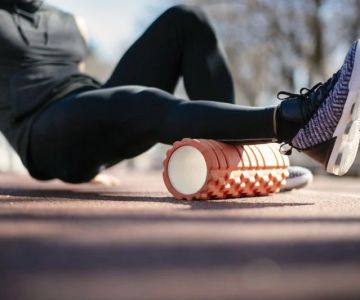
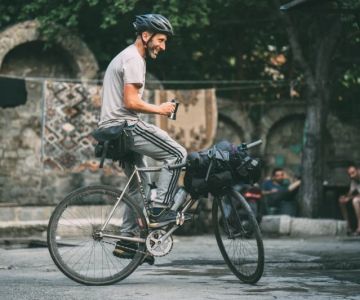


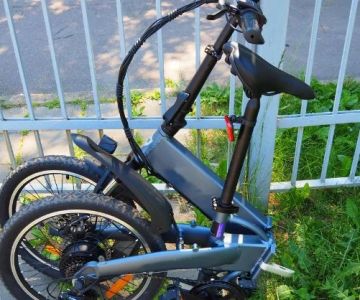

 The Bike Center Santa Monica4.0 (476 reviews)
The Bike Center Santa Monica4.0 (476 reviews)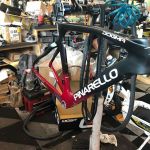 Miami Beach Bicycle Center4.0 (439 reviews)
Miami Beach Bicycle Center4.0 (439 reviews) Scooter's Bike Shop4.0 (158 reviews)
Scooter's Bike Shop4.0 (158 reviews) Magnum Electric Bikes, Scottsdale5.0 (117 reviews)
Magnum Electric Bikes, Scottsdale5.0 (117 reviews)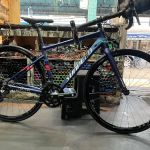 Elias Bicycle Shop4.0 (82 reviews)
Elias Bicycle Shop4.0 (82 reviews)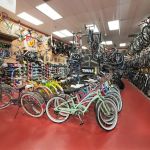 Incycle San Dimas4.0 (572 reviews)
Incycle San Dimas4.0 (572 reviews) How to Teach Kids to Ride a Bike: A Step-by-Step Guide for Parents
How to Teach Kids to Ride a Bike: A Step-by-Step Guide for Parents Tips for Riding on Busy City Streets: Smart Strategies for Urban Cyclists
Tips for Riding on Busy City Streets: Smart Strategies for Urban Cyclists Best US National Parks for Mountain Biking: Ride Epic Trails Across America
Best US National Parks for Mountain Biking: Ride Epic Trails Across America Best Aero Helmets for Time Trials and Racing
Best Aero Helmets for Time Trials and Racing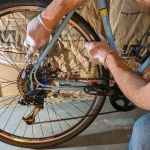 How to Clean and Lubricate Your Bike Chain Like a Pro
How to Clean and Lubricate Your Bike Chain Like a Pro 10 Must-Have Items for Long-Distance Cycling Trips
10 Must-Have Items for Long-Distance Cycling Trips